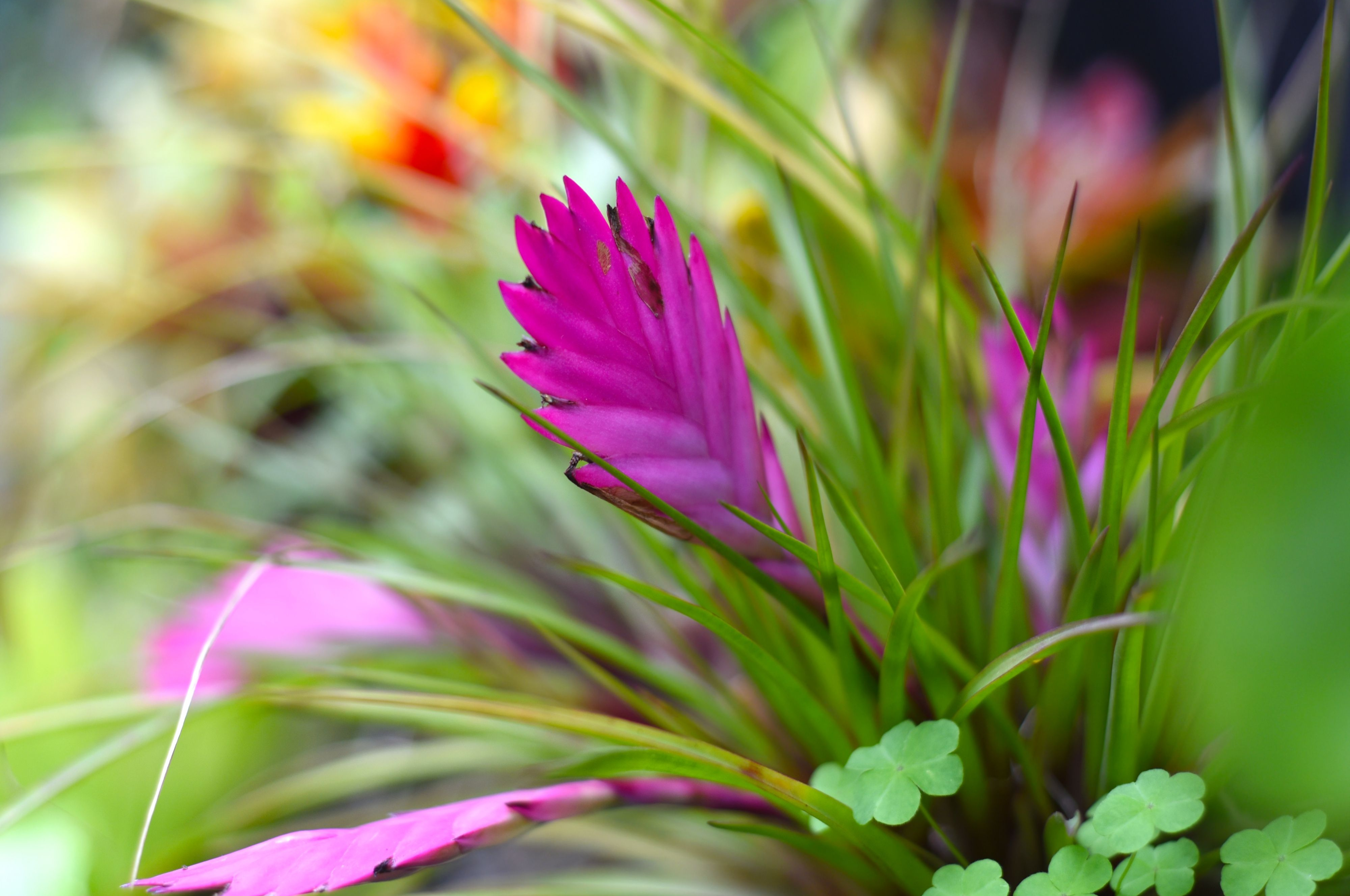Guatemalan air plant
(Tillandsia guatemalensis)

Description
Tillandsia guatemalensis, commonly known as the Guatemalan air plant or the quetzal air plant, is a species of epiphytic plant belonging to the family Bromeliaceae. It is native to Central America, specifically Guatemala, Honduras, and El Salvador. This unique plant is popular among plant enthusiasts because of its striking appearance and ease of care. In this article, we will explore everything you need to know about Tillandsia guatemalensis. Taxonomy and Nomenclature The scientific name of Tillandsia guatemalensis was first described by the Swedish botanist Carl Linnaeus in 1753, in his book Species Plantarum. The species name “guatemalensis” refers to the plant’s native range in Guatemala. Description and Characteristics Tillandsia guatemalensis is a slow-growing, epiphytic plant that typically reaches a height of 30-40 cm. The leaves are thin, narrow, and elongated, growing up to 25 cm long and 2 cm wide. The leaves are green, gray-green or blue-green in color, and are covered in tiny, scale-like trichomes that give them a fuzzy texture. The plant also has long, slender, reddish-purple inflorescences that grow up to 20 cm long. The flowers are small, pale lavender or pink, and produce small seeds. Habitat and Distribution Tillandsia guatemalensis is native to Central America, specifically Guatemala, Honduras, and El Salvador. It can be found growing in a variety of habitats, including forests, savannas, and even in urban areas. In its natural habitat, the plant grows as an epiphyte, meaning it attaches itself to trees or other objects without taking nutrients from them. Instead, it obtains water and nutrients from the surrounding air through its trichomes. Cultivation Tillandsia guatemalensis is a popular plant for cultivation because of its ease of care and striking appearance. It can be grown indoors or outdoors in areas with warm, humid climates. The plant prefers bright, indirect light and should be protected from direct sunlight. It also needs good air circulation and should be misted regularly to provide it with the moisture it needs to survive. Propagation Tillandsia guatemalensis can be propagated through seed or by dividing the offsets that grow from the base of the plant. To propagate by division, gently pull the offsets away from the main plant and plant them in a separate container. Water the new plant regularly and mist it often until it is established. Uses Tillandsia guatemalensis is primarily used as an ornamental plant. It is a popular choice for terrariums and other indoor plant displays because of its striking appearance and ease of care. The plant is also used in traditional medicine in Central America to treat a variety of ailments, including stomach problems and skin infections. Conservation Status The conservation status of Tillandsia guatemalensis is currently classified as “Least Concern” by the International Union for Conservation of Nature (IUCN). However, like many epiphytic plants, it is vulnerable to habitat loss due to deforestation and urbanization. Additionally, the plant is sometimes collected from the wild for use in horticulture or traditional medicine, which can put further pressure on wild populations. Conclusion Tillandsia guatemalensis is a unique and striking plant that is popular among plant enthusiasts for its ease of care and ornamental value. Its natural habitat in Central America is under threat, however, and it is important to take steps to protect this and other epiphytic plants from habitat loss and over-collection.
Taxonomic tree:







